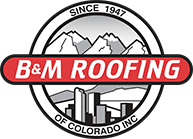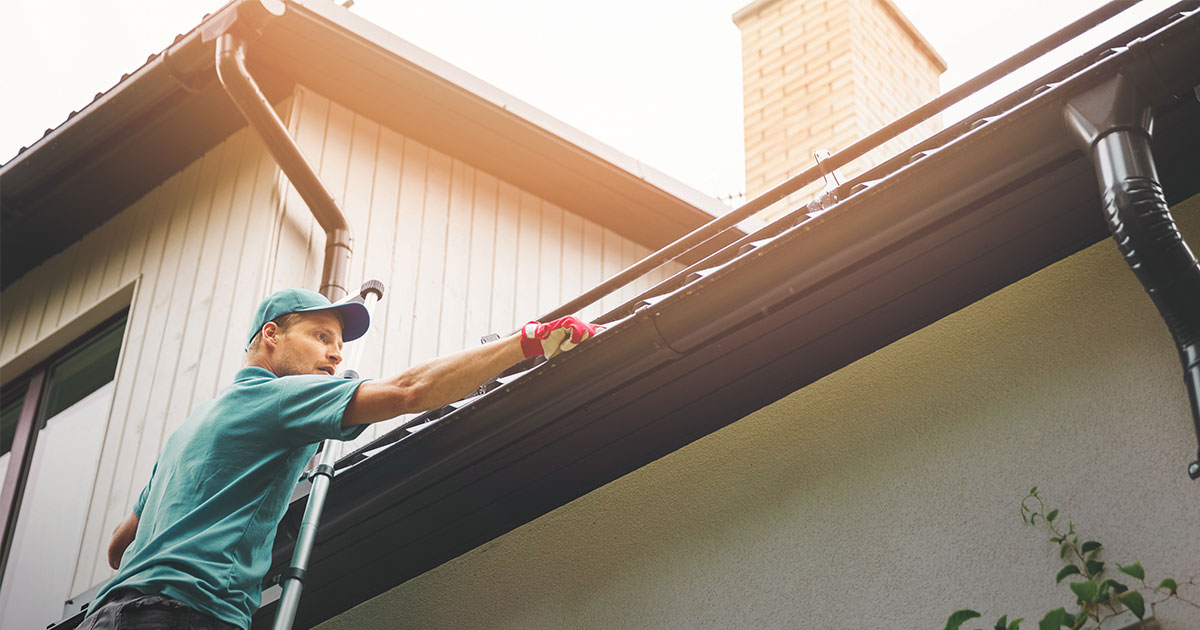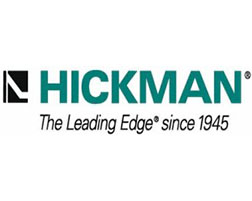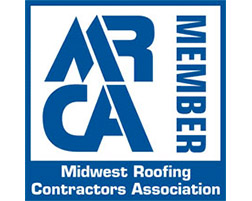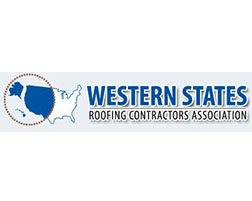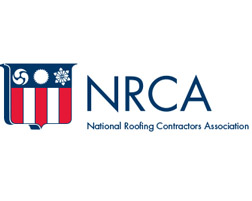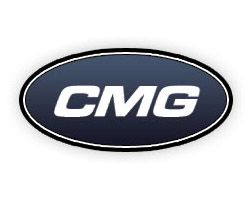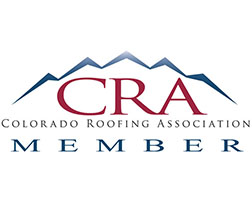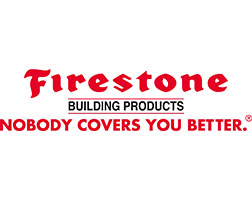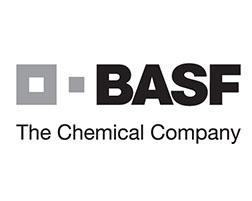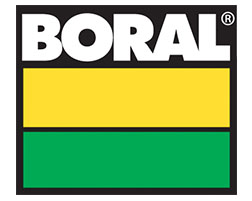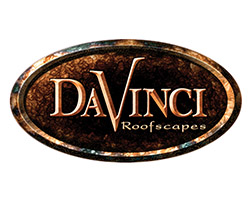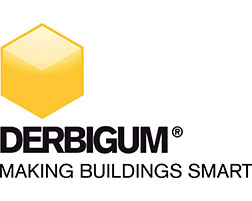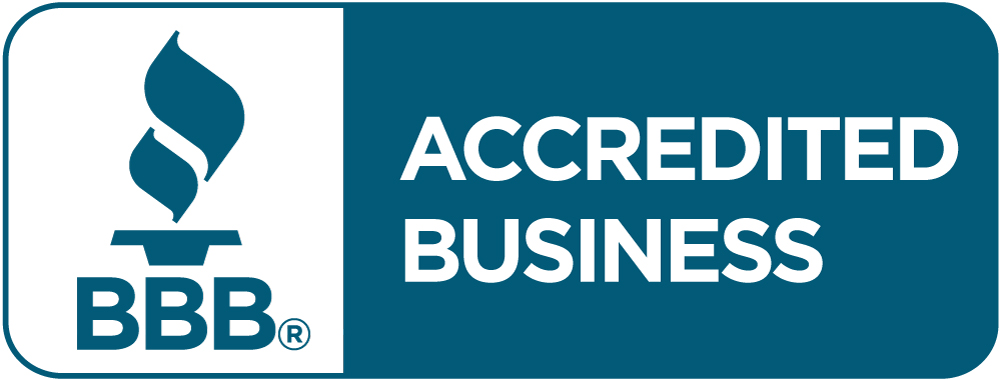B&M Roofing’s Spring Cleaning Checklist
Spring is right around the corner, which means spring cleaning is in full effect. While decluttering your home and cleaning out the shed are great places to start on your cleaning list, your roof also needs a little extra love this season. By following B&M Roofing’s Roof Spring Cleaning Checklist, you can ensure that your roof stays in good shape for the remainder of the year.
1. Trim Overextended Branches
Long branches can scratch, damage or even completely remove roofing materials. Trim any extended branches that are encroaching your roof.
2. Check Flashing & Shingles
After a snowy winter, flashing and shingles can become damaged. Inspect for any loose or curled shingles and for damaged flashing. These things can get worse over time if unattended to, so catching them early will help your roof last as long as possible
3. Clean Gutters
You gutters have been working overtime to drain all the rain and snow that accumulated on your roof during the winter. Giving them a good cleaning will ensure that water continues to drain properly off of your roof to prevent damage.
4. Inspect Attic
A healthy roof starts on the inside. Inspect your attic for any stains or leaks that may have surfaced over the winter.
5. Remove Mold & Debris
Debris and moss can cause severe damage to your shingles and clog your gutters. To prevent this, make sure to sweep off sticks and leaves from your roof and use control strips to remove moss and algae.
6. Hire an Inspector
After a harsh winter, it’s possible that leaks or structural damage have occurred on your roof. Hiring a professional to inspect your roof and make any necessary repairs is the safest way to protect your home. B&M Roofing is proud to provide roofing service and repair on everything from small residential roofs to complicated high-end commercial properties throughout Colorado and its surrounding areas. Visit our website for a free estimate on roofing services: https://bmroofing.com/free-estimate/
Roof Safety Tips
As the seasons start to change and you are preparing to do spring cleaning and work around your house, we want to remind you how to be safe on your roof. Whether you are taking down holiday lights and decor or checking your roof for damage and leaks, you should follow these roof safety tips.
Wear proper clothing
One of the most common causes of falls from roofs is the lack of appropriate clothing. Most importantly, boots. We recommend that if you are going to be on your roof that you invest in a pair of steel-toed boots. They will provide a better grip on your roof and protect your feet from injury. Never wear sandals or open-toed shoes on a roof. We also recommend that you dress for the weather. Wear clothes that will protect you from the elements. You should also wear gloves, safety glasses, and a hard hat if you are doing substantial work on your roof.
Use a safety harness
Slips and falls off roofs can lead to serious injury and even death. We advise anyone who will be working on their roof to be sure to use a safety harness, especially when working on steep areas of a roof. A safety harness will help prevent injury or death in the event you slip or fall off your roof. Some states require safety harnesses to be worn on any roof above ten feet.
Use an extension ladder
Having too short of a ladder is also another common cause of injury during roof projects. Leaning over short ladders causes many falls each year due to ladders toppling over. Ladders need to safely touch the roof so you don’t have to lean forward. They should also extend just slightly over the roof as you will want to be able to grab the edges on your way down. Extension ladders make it easy to adjust a ladder to the proper height.
At B&M roofing, the safety of our workers is of the utmost importance. We go above and beyond to ensure the safety of our crews and customers. Our number one priority is to keep our workplaces accident free. We have implemented a number of programs to help ensure a safe work environment that you can read more about here. For a free estimate, contact our roofing experts by filling out this form.
How to Choose the Right Contractor for Your Commercial Project
As a commercial property owner, maintaining your property and buildings is important. When your commercial roof has been damaged, you should hire a contractor to make much-needed repairs. Here are some tips for choosing the right contractor for your commercial project.
Check Credentials
Determining whether the roofing company is reputable is your first step. Ask for their license, check that they are insured, and ask if they have referrals from other businesses in the area. The license will tell you that they are certified to do the work they promised. Insurance is also important for any contractor to have. They should at least have liability and worker’s comp, which ensures that you are not liable for damages to property or bodily injury while they are repairing or installing your roof.
Check Reviews
Testimonials or reviews are also a great source of information to determine if a contractor is right for your project. These can tell you if the company is easy to work with or if projects with that contractor are a hassle. Check how recently they were reviewed and for any patterns of discontent from past clients. Google reviews and social media reviews are a couple of the best places to find relevant reviews and testimonials from past clients. You can also ask other commercial businesses who they might recommend.
Get a Detailed Estimate
Most contractors will want to see the project before giving you a quote. Let them take a look at your project needs, but don’t expect an estimate right away. Contractors should take the information they collect back to the office and construct a detailed estimate out of that information. You can ask specifically for things to be itemized so you can compare estimates from other contractors.
B&M Roofing is proud to provide commercial services to businesses in the Denver and Boulder areas. We have a strong portfolio of successful commercial roofing projects. You can see some of them here. We also provide free estimates and you can request one today!
Repairing a Water Damaged Ceiling
Repairing a leak in your roof is a pain, but dealing with the unsightly water stain that it left on your ceiling can be an even bigger pain. Roof leaks often cause discoloration and mold on the interior of your home that can be difficult to get rid of. Luckily, we have a step by step solution to getting your house back in tip-top shape!
Step 1: Bleach
One sure-fire way to clean a water spot is by using a bleach solvent. Combine one cup of bleach and three cups of warm water in a bucket. Set up a drop cloth on the floor below the stain and prop up a ladder to reach it. Wipe down the stain with a clean sponge saturated in the bleach solvent. Then, rinse the bleach off the ceiling with water and wipe the damp area dry with a clean cloth. While this process won’t necessarily remove the unsightly stain, it will fade the stain and remove any mildew, grease, dirt, or dust from the stain.
Step 2: Base Coat
Applying a base coat on top of the stain is essential to making sure it stays covered up. Use an oil-based, mold-resistant, stain-blocking primer in a shade that matches your ceiling. Oil-based stain-blocking primers are water-insoluble so your stain won’t bleed through the paint. Use a paint roller to the apply the primer and allow it to dry for the time instructed by the packaging.
Step 3: Ceiling Paint
Find a paint color that matches that of the rest of your ceiling. Apply a few coats of the paint over the primer and let dry.
Voila! Your ceiling is back to normal and ready for the holidays! Remember, covering a water stain makes the inside of your home look better, but finding the root cause of the leak is the only way to fully protect the structure of your home. If you’re concerned about a leak in your roof, call us at 303-443-5843 or submit a service request on our website: https://bmroofing.com/service-requests/.
Fall Stand-Down for Safety
 Every year about 100 construction workers die from falls, and 13 times as many are seriously injured. Did you know homeowners can play a role in promoting roofing safety among contractors?
Every year about 100 construction workers die from falls, and 13 times as many are seriously injured. Did you know homeowners can play a role in promoting roofing safety among contractors?
Falls are the leading cause of death among construction workers, and falls from rooftops are the most common type of fall. Nobody wants their property to be the site of an accident, and working with contractors who take precautions to protect their workers is the first step to preventing those kinds of accidents.
When evaluating a bid from a contractor, consider its commitment to safety as well as the price it provides. In many cases, it’s common to get a low bid from a roofing company because they’re not committed to safety. Ask your contractor the following questions to ensure you’re choosing one that supports safety:
- Do your workers work directly for you? Workers who are independent contractors aren’t covered by the roofing company’s workers’ compensation insurance, and, in many cases, aren’t insured at all.
- Do you have workers’ compensation insurance? Ask to see a copy of the insurance certificate. Colorado law requires all employees to be covered by workers’ compensation.
- Do your workers use safety equipment on site? Lifelines, guard rails and secured ladders are used by responsible roofers.
Experience isn’t protection enough. Even veteran roofers with more than a dozen years of experience can fall from a roof on even a routine residential job.fal
B&M Roofing takes our dedication to safety very seriously. In addition to regular fall protection trainings, we have company-wide safety meetings twice a year, weekly Tool Box Talks to discuss safety procedures and OSHA requirements and new-hire safety orientations.
With OSHA’s national fall stand-down push May 7-11, we’re working internally to ensure all our employees play it safe whenever they’re on a rooftop. While roofers can do our part, it’s up to homeowner to rely only on reputable contractors as well.
UV Rays’ Affect on Asphalt Shingles
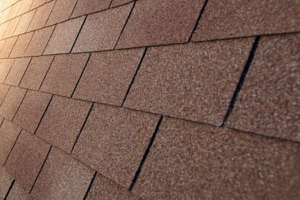 Living in Colorado, you’re probably used to taking precautions to protect yourself from the harsh mile-high sunshine: you slather on sunscreen, wear hats and stick to the shade when the sun’s at its peak. Just like the sun’s ultraviolet rays can harm your skin, UV rays affect asphalt shingles.
Living in Colorado, you’re probably used to taking precautions to protect yourself from the harsh mile-high sunshine: you slather on sunscreen, wear hats and stick to the shade when the sun’s at its peak. Just like the sun’s ultraviolet rays can harm your skin, UV rays affect asphalt shingles.
The bad news is there’s not a whole lot you can do to help stretch the life of your existing roof. UV rays can cause protective layers on top of asphalt shingles to dry up, leading to warping and cracking with prolonged exposure to the sun. While most asphalt shingles are engineered to withstand ultraviolet radiation for extended periods, the intense high-altitude sun can speed the demise of traditional shingles.
Solar reflective roofing – which is also known as cool roofing – can help prevent UV degradation on your shingles. These shingles are designed to reflect more of the sun’s rays, and include a coating on shingle granules that makes them more reflective. This coating is applied to the shingle at the factory. It’s typically not a good idea to attempt to retrofit an existing shingle roof with UV coating.
Because cool roofs reflect ultraviolet rays, they typically resist sun damage better than conventional roofing materials, particularly in Colorado’s intense sun. As their name implies, they also don’t heat up like traditional shingles do. Excessive heat can be linked to premature failure in asphalt shingles.
Cool, UV-resistant roofing also helps control energy costs. By absorbing less of the sun’s rays, these shingles stay naturally cool, helping keep attics closer to outdoor temperatures. They’re also ideal for helping control temperatures in areas without air conditioning, such as garages and under covered patios.
If you think your roof has sun-damaged shingles or is in need of repair, contact B&M Roofing of Colorado for a free estimate. Use our free estimate request form or call us at 303.443.5843.
Tips for Safely Hanging Outdoor Christmas Lights

Hanging enough Christmas lights from your roof to blind your neighbors is a favorite holiday tradition for most. Be careful when you’re up on your ladder: One misstep and you changed holiday plans from turkey and dressing to bandages and body casts. Therefore, before recreating Clark Griswold’s 5,000 twinkling lights on your own merry and very bright house, follow these safety tips to hanging outdoor Christmas lights.
- Start With a Plan
Ask yourself these questions before climbing on the roof.
- Do you know how you want your display to look?
- What kind of string lights do you want?
- How many string lights are needed for your design?
The more you can determine safety on the ground, the easier it is to implement on the roof.
- Can you do this?
Before dragging out the ladder, evaluate your health and physical abilities. If you have any type of balance issues or medication that increase risk of bleeding should an injury arise, take a break from climbing ladders this year.
- Survey the Weather
The best time to hang Christmas lights is when it is not wet or cold outside. The more comfortable the weather the better the installation process will go. Climbing a slippery ladder onto your roof can be dangerous and cause the biggest worry this holiday season: falling.
- Check Your Light
Before climbing onto the roof, plug in all lights to check bulbs are working and replace burned out bulbs. Never use damaged or frayed cords for the possibility of damage to other Christmas decorations and electrical fires.
- The Perfect Ladder
Some of the most common roof falls involves a ladder. Make sure your ladder:
- Extents at least 3 feet over the roofline
- Is placed firm and level on the ground
- Supports your weight
- Sets up at a 75 degree angle
- Is away from all doors that could be opened or power line
Properly expecting your ladder before hanging anything from your roof can not only protect your life but your roof’s life as well.
- The Buddy System
When using a ladder, make sure to always have a spotter to hold ladders to prevent tipping. While on the ladder make sure you stay grounded in the center of each ladder rung.
- Hanging Lights
Using plastic clips to hang Christmas lights is the safest and best option. Plastic clips are easy to install and remove from shingles and gutters. Using the traditional nails or staples can puncture your shingles or gutters; even the smallest hole in one shingle can bring moisture to seep in and cause roof damage.
- Finally – Flip the Switch
Your lights are up and ready for the grand showcase! Grab yourself a cup of hot coco and a Christmas cookies for the big reveal – you have earned it.
Adding Vents to Soffit
Anyone who’s been in an attic during a summer day can attest it’s a hot place to be. Having all that heat above your living space isn’t just hard on your air-conditioning bills. It can damage your roof. Control temperatures naturally by increasing circulation by adding vents to soffit.
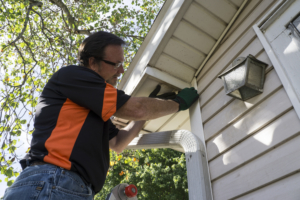 Attics stay cool (relatively speaking) by use of natural venting. Hot air rises and escapes from rooftop vents, and is replaced by cooler air drawn in through venting in walls and the overhang of eaves. If your home doesn’t have enough venting, you’ll be left with a stuffy attic.
Attics stay cool (relatively speaking) by use of natural venting. Hot air rises and escapes from rooftop vents, and is replaced by cooler air drawn in through venting in walls and the overhang of eaves. If your home doesn’t have enough venting, you’ll be left with a stuffy attic.
Start by determining if you have enough ventilation already. As a rule of thumb, you’ll want one square foot of vent for every 10 square feet of attic floor space. (Determine your magic ventilation number by multiplying your attic’s length by its width and dividing by 10.)
If you need to increase ventilation, adding vents to soffit is a relatively easy project, even for novice handymen. Remember to use eye protection and follow ladder safety before you start the project.
- Locate places for new vents. You’ll want to find spots that are between rafters, and evenly spaced throughout the attic. After you install them, you may need to clear insulation or other debris from their top.
- Use the vent itself as a template to guide installation. Trace around the edge of the vent. Remove the vent and draw cut lines about 3/4″ of an inch inside the vent’s outer edge.
- Cut the hole. You’ll need a keyhole saw or a jigsaw to remove material. Drill holes at each corner of your cutline using a bit slightly larger than your saw’s blade.
- Fit the vent in the hole, and secure it using wood screws.
Depending upon your skills and how many vents you need to add, the project typically takes less than an afternoon. Adding vents to soffit won’t solve your cooling issues entirely, but it’s a great first step toward overall attic health.
Are 50-Year Shingles Worth the Money?
 It’s one of the most common questions people ask when it’s time to replace their roof: Are 50-year shingles worth the money? And like most questions, our answer is simple. It depends.
It’s one of the most common questions people ask when it’s time to replace their roof: Are 50-year shingles worth the money? And like most questions, our answer is simple. It depends.
Are you planning on staying in your home for 50 years? Or hold onto it as a long-term investment property, at least longer than 25 or 30 years? Then by all means, it’s a good investment. Not only will you save yourself the hassle of scheduling multiple meetings with estimators and installers, you’ll have a greater basis for roofing costs, it’ll be an expense you won’t have to worry about later in life.
If you’re not planning on holding the property for decades, the calculus is a little trickier. In most cases, 50-year shingles won’t improve on resale value of a home over 25- or 30-year shingles. That said, because a large portion of the cost of your roof is labor-related (getting crews to the job site, removing old shingles and installing new ones, hauling old shingles to the dump), the overall cost to your project should you choose premium shingles may be relatively minimal.
Further confusing the issue is the always-subjective matter of esthetics. Simply put, sometimes you may have your heart set on an asphalt shingle that’s only available in a premium, 50-year line. Does sacrificing the appearance of your home justify cutting an expense in your next roofing project? That’s going to depend on who you ask, and how close of an alternative is available.
If 30- or 50-year shingles were the best choice for every home, there would only be one kind. Determining your needs and your budget is the first way to help you find an answer to the “are 50-year shingles worth the money” conundrum so many homeowners find themselves. Need more info? Our estimators are always ready to help you find your best roof.
Warped Shingles: What Does That Mean for My Roof?
Let’s get the worst news out of the way first: If from the ground you can see warped shingles, it’s likely a sign that you’ll need a new roof. Often damage is only visible after climbing up and inspecting a roof.
 Asphalt shingles are durable, but are prone to the elements, particularly after the granules on their surface start deteriorating and getting washed away in rainstorms. Once the protective layer is removed, shingles are exposed to ultraviolet light, which makes them brittle or otherwise fragile. Warped edges can be a sign that shingles have reached the end of their natural lifespan.
Asphalt shingles are durable, but are prone to the elements, particularly after the granules on their surface start deteriorating and getting washed away in rainstorms. Once the protective layer is removed, shingles are exposed to ultraviolet light, which makes them brittle or otherwise fragile. Warped edges can be a sign that shingles have reached the end of their natural lifespan.
If your shingles aren’t shedding granules and are cupping – curling at both corners to be concave – it can be a signal that your attic isn’t properly vented. Rooftops soak up a lot of sun and heat, and transmit it to the home below it. A properly vented attic allows some of the heat to escape. Without venting, heat collects in your attic, and can expose the underside of shingles to extreme heat beyond their normal temperature tolerances, which can cause them to warp.
If you’re unsure of your roof’s condition or aren’t comfortable climbing on your roof to investigate, B&M Roofing is there to lend a hand. Call us at 303.443.5843 to request a free inspection and estimate.
